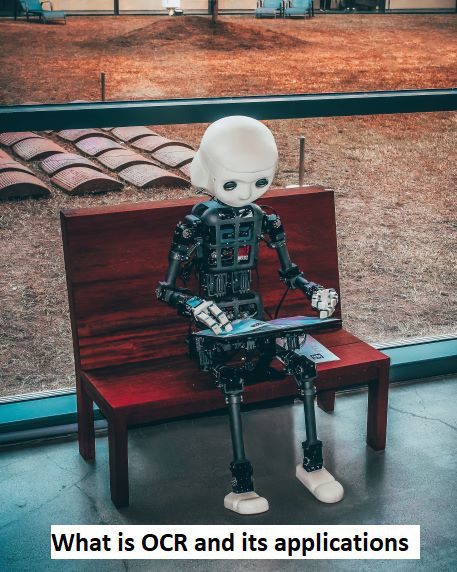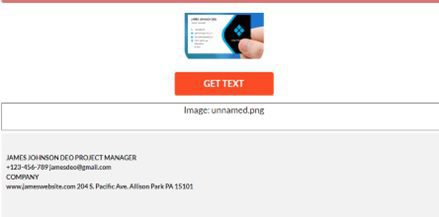
Optical character recognition is an AI-based technology that specializes in extracting text from images. These images can be handwritten, typewritten, or scanned. The converted text is editable and easy to sort, store, and configure.
We are living in an age where everything has gone through a digital revolution. The internet is being used by 63% of the world population. In all recorded history, no technology has gained this much popularity.
The internet works on digital data. A business or a professional can not survive without data digitalization. The OCR is the primary tool for such conversions. The OCR is being widely used in retail, manufacturing, healthcare, online businesses, government institutions, and all other businesses.
The global OCR market currently stands at USD 10.65 Billion in 2022. As per market indicators, it is projecting annual growth of 15.6% per annum during 2022-2030. This shows the trust of the market in its efficiency and sustainability.
The OCR has helped in data analytics, surveying, market forecasts, process automation, human resource management, and mutual transactions. The technology has shown 100% transparency in data conversion without human malfunctioning.
Types of OCR
The OCR can be divided into 5 fundamental types, which include:
Intelligent Word Recognition (IWR)
This type of OCR utilizes advanced artificial intelligence algorithms to extract words from an image. The tool understands the text as a combination of words. After recognizing words, it produces a comprehensible output.
The IWR is most suitable for handwritten images.
Intelligent Character Recognition (ICR)
The ICR is based upon the identification of individual characters. This is an advanced type. It breaks an image down to a singular character level. The combination of these characters formulates the final output.
The ICR specializes in converting blurry handwritten images into digital forms.
Optical Word Recognition (OWR)
This type relies on an optical device for the recognition of text. The optical device extracts the data, which is then compared with the stored database of the OCR tool. The similarity of both decides the output of the tool.
The tool is useful for type-written tools.
Optical Character Recognition (OCR)
This type also uses an optical device but in a slightly different manner. The tool identifies individual characters, which are then compared with the tool’s internal database. The commonality provides the result.
The tool can extract text from scanned and type-written images.
Optical Mark Recognition (OMR)
This technology uses an optical device to identify the pattern or mark on the object. The identification results in clearance or data identification.
This type is used in surveying and automatic form filling.
How to use OCR?
We have shared the introduction and fundamental types of OCR. Let us now understand how to use OCR to your advantage.
- For that, you need to select an image. It can be JPG, PNG, GIF, or SVG. For illustration, we have selected the following image:

- After that select a quality online OCR Tool from the internet.
- Now upload the file on the input window of the tool.
- Once the upload is complete, click on “Get Text” or any such option to proceed.
- Extract the text from the tool.
- Now compare both texts. There shouldn’t be any loss of characters or expressions. You can see below in our case that the efficiency is 100%

You can use this simple method to extract text from any image.
Applications of OCR
OCR has revolutionized the business and all fields relying on data analytics. The technology has its footprints laid out in the following fields:
- Banking
The banking sector is among the largest consumer of OCR technology. It allows the banks to handle written checks.
The cheque is scanned. After that, with help of OCR, all of its data is converted into a digital version. The signature verification and clearance happen instantly. The technology has shown 100% accuracy. All the details are matched against the previous database to make the right judgments.
The technology has caught many scams, saving billions of dollars from the bank. The OCR is also used for insurance and bank securities.
- Legal
The legal sector has a framework that involves a lot of paperwork. This makes it among the biggest beneficiaries of OCR technology.
The OCR is used to extract text from affidavits, statements, wills, and other legal documents. Since the technology is 100% secure, there isn’t any risk of mala fide tempering of sensitive documents.
The OCR can also translate the text into various languages. This helps lawyers in pleading international cases by translating the scanned images into English or their local language.
For countries functioning on the law of precedence, every ruling is a landmark constitutional event. The lawyers have to read all judgments of the past along with their most recent interpretations. The OCR with digital conversion helps in easy sorting and analysis of these cases.
- Health Care
The OCR has been central to the development of the health sector. The data of patients collected is converted into editable format and stored in the computer. This helps the doctors to know the history of the patient and illness.
Also, modern-day labs keep a record of all previous test results of a patient. This helps in knowing the trajectory of the disease.
The OCR when aligned with the database of the health sector proves beneficial in finding disease hot spots and also making health policy for a region and also for a country.
During the recent Covid-19 wave, countries like New Zealand with a functional database were able to make better decisions than the rest of the world. This resulted in a quick reaction and Covid control.
- Airport Check Points
The OCR has drastically improved airport functionalities. Whether it be flight booking, cancellation, or travel management, the OCR has contributed to a better user experience.
The overwhelming majority of airports use OCR for security and luggage clearance. The OCR also helps in smooth passport checking. It saves security from the trouble of checking every damn line, physical experience, and other attributes.
All you need is a simple OCR scan and then the system would do the rest.
- Businesses
Businesses work on data. You cannot decide the future of companies on empty words. With OCR they can get real-time data on the supply chain, processes, market forecast, and sales.
The digital data is easy to compare. You can inculcate all factors affecting sales in one sheet and ponder about your future. The OCR also helps in employee identification, transfer of payments, and other key areas.
With OCR you can make your processes transparent and aligned with the vision of the organization. It ensures transparent data collection, which goes a long way in building trust among the employees.
- Number Plate Recognition
The OCR helps in the instant recognition number plate of a vehicle. This recognition is important for various reasons. It is used for paying toll taxes, identification of stolen cars, calculating parking fees, and sending traffic violation challans.
FINAL WORDS
The OCR is the technology of the present and the future. It makes your sensitive data secure, sorted, and easy to interpret.
This article highlights the introduction, types, and applications of OCR. We have shown how technology has made our life easier.
